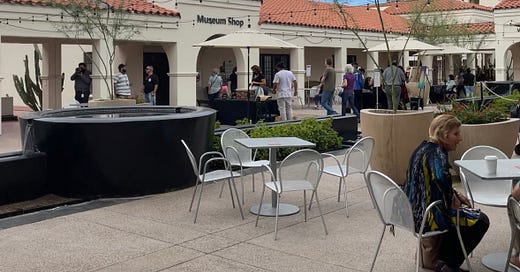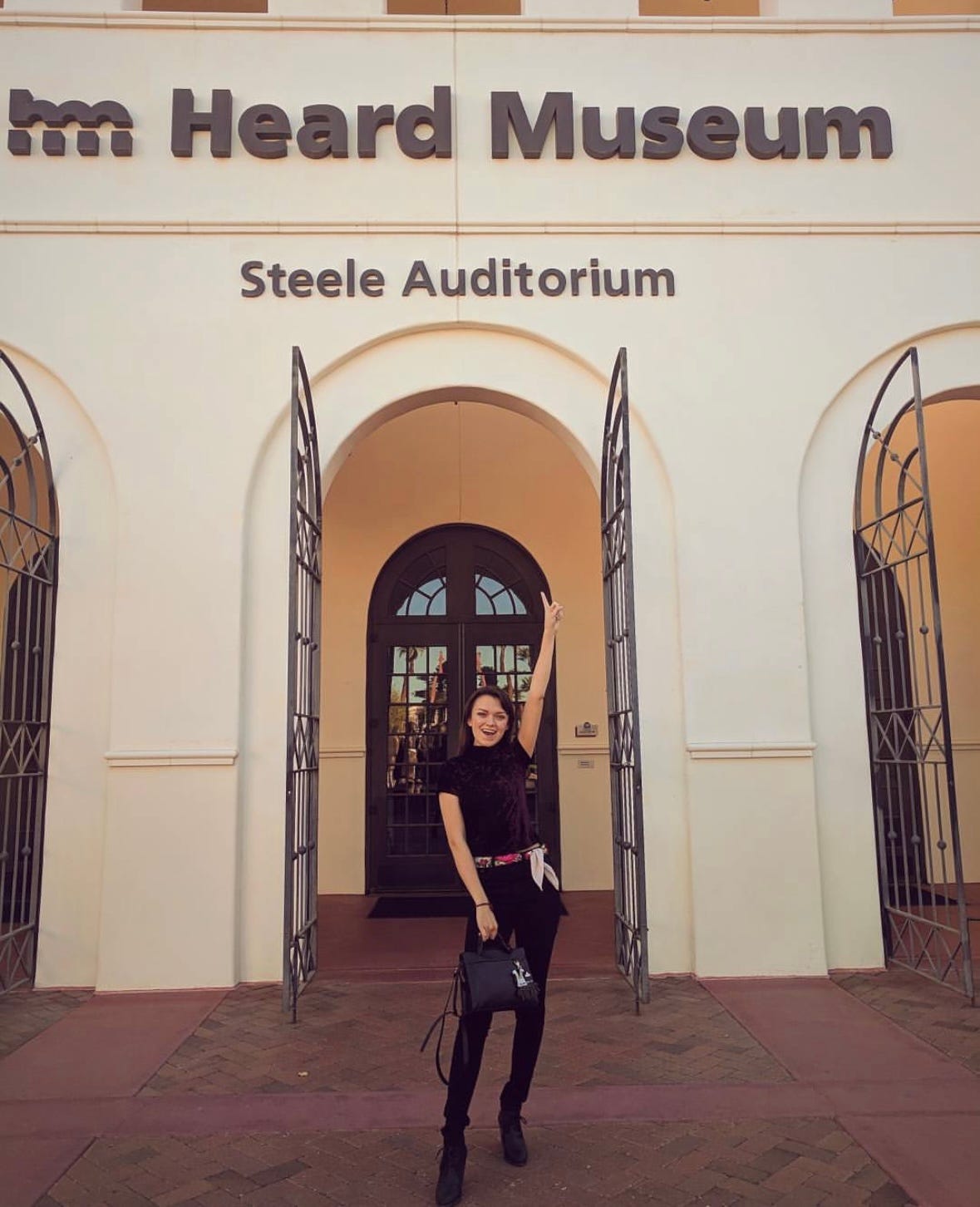The Heard Museum's 65th Annual Indian Fair & Market
Exploring the History and Impact of the Heard Museum's Indian Fair & Market
This weekend, thousands of people across the Southwest will gather at the Heard Museum in Phoenix for the 65th annual Indian Fair & Market. This vibrant event celebrates Native American culture and creativity, showcasing diverse traditional and contemporary art forms. For Native artists, the market is a chance to connect with collectors, other artists, and friends and showcase their work. For visitors, the market is an opportunity to learn about Native American art and culture from the artists themselves and experience the unique atmosphere of this dynamic event. In this blog post, we'll take a closer look at the history of the Heard, what to expect at the Indian Fair & Market, and why it is such an important event in the Native art world.
I. History of the Heard Museum and the Indian Fair & Market
Indian Fair & Market has been taking place since 1959, making it one of the oldest and most established Native American art markets in the United States. Since its founding, the market has grown in size and scope, and it now attracts artists and visitors from across the Southwest and beyond. The market usually occurs in early March and features exceptional Native-made jewelry, pottery, textiles, paintings, baskets, sculptures, and more.
The market is hosted at the Heard Museum, founded in 1929 by Dwight and Maie Heard. Dwight Heard was a successful newspaper publisher and real estate developer who built his fortune in the early 20th century.
Maie Bartlett Heard, Dwight's second wife, was an artist and philanthropist who shared her husband's interest in Native American culture and art. In addition to founding the Heard Museum, she was a founding member of the Phoenix Indian School Art Committee, which aimed to promote the artistic achievements of Native American students at the Phoenix Indian School. Unfortunately, Dwight B. Heard passed away shortly after the museum opened, and Maie passed away much later in 1951.
The Heards amassed their extensive collection of Native American art and artifacts through purchases and donations from various sources, including private collectors and traders. However, the acquisition of many objects in their initial collection is controversial. At the time, collectors and traders often acquired objects from Native communities through questionable means, such as exploiting economic and social disparities or engaging in outright theft. Many objects were viewed as "exotic" or "curiosities" rather than as important cultural artifacts.
Furthermore, at the time of the museum's construction in the 1920s, the Spanish colonial style was a popular architectural style in the Southwest, reflecting the region's history of Spanish colonization. Therefore, the Heards believed that the style was a natural fit for a museum that focused on Native American art, reflecting the historical connections between Spanish and Native American cultures in the region.
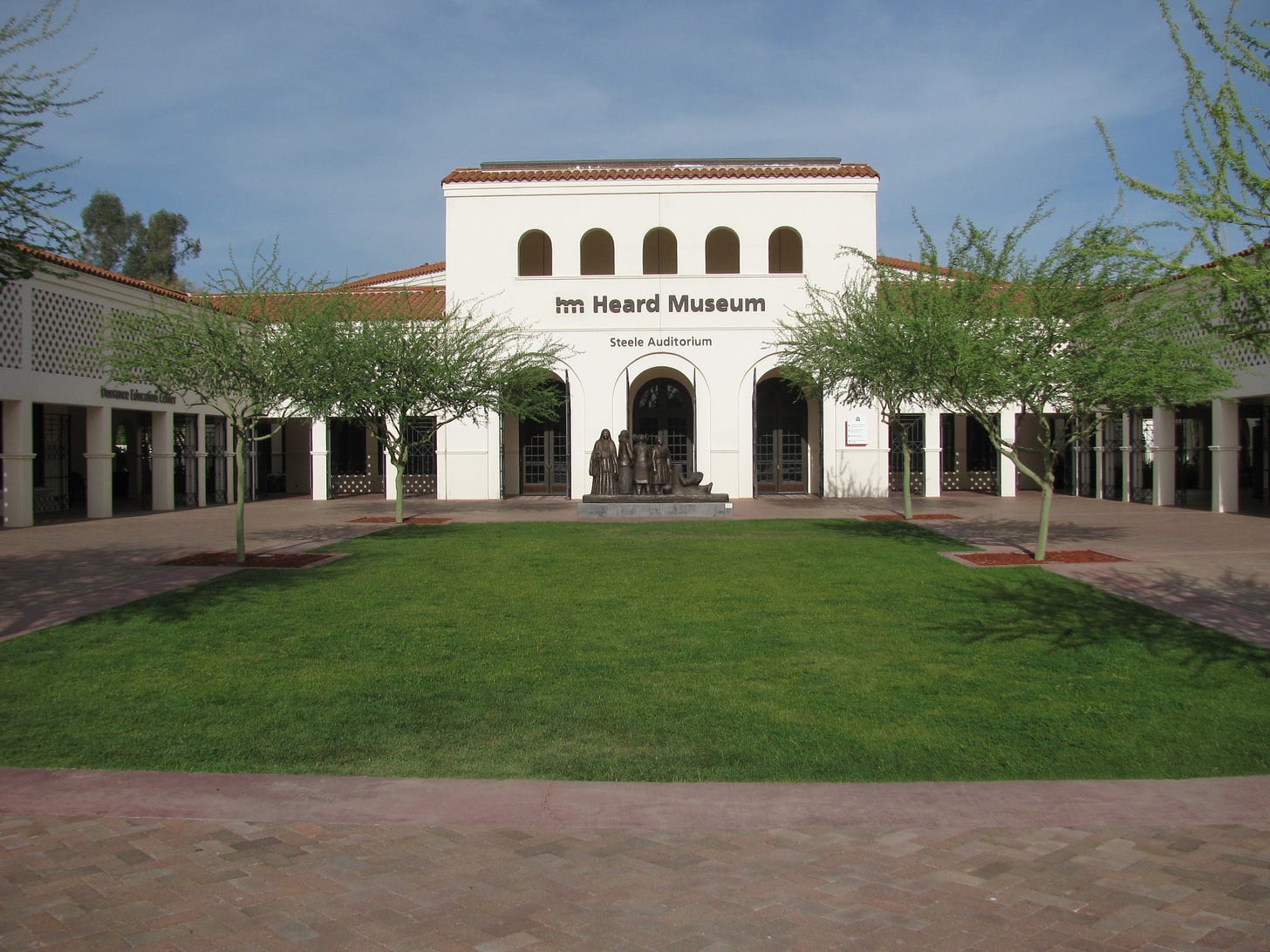
However, the decision to use a Spanish-style building to house a private Native American art collection has been criticized by those who argue that it reinforces a colonialist narrative that erases the unique cultural identities of Native people. Phoenix, Arizona, is located on the traditional homelands of several sovereign nations, including the Akimel O'odham (Pima) and Pee Posh (Maricopa) peoples, as well as the Tohono O'odham, Yavapai, and Apache nations. These nations have inhabited the land in and around the Phoenix area for thousands of years, cultivating rich cultural traditions and deep connections to the natural environment.
Despite the profound impacts of colonization, displacement, and forced removal, these communities continue to maintain their cultural heritage. As visitors to the Phoenix area, it is important to acknowledge and honor the Indigenous peoples who have stewarded this land for generations and continue contributing to the region's richness and diversity today.
Around the 1980s, the museum began to receive significant criticism for perpetuating stereotypes and promoting a narrow view of Native American culture. However, in recent years, the Heard Museum has made a concerted effort to address these issues and engage with contemporary Native art and artists.
Today, the Heard Museum acknowledges this complicated history and works to ensure that its collection and exhibitions are grounded in ethical practices and respectful engagement with Native communities. The museum has developed collaborative relationships with many Native artists and scholars. It works to provide a platform for Native voices and perspectives in its exhibitions and programs. The Heard Museum has worked to become a leader in ethical stewardship and interpretation of Native art and culture.
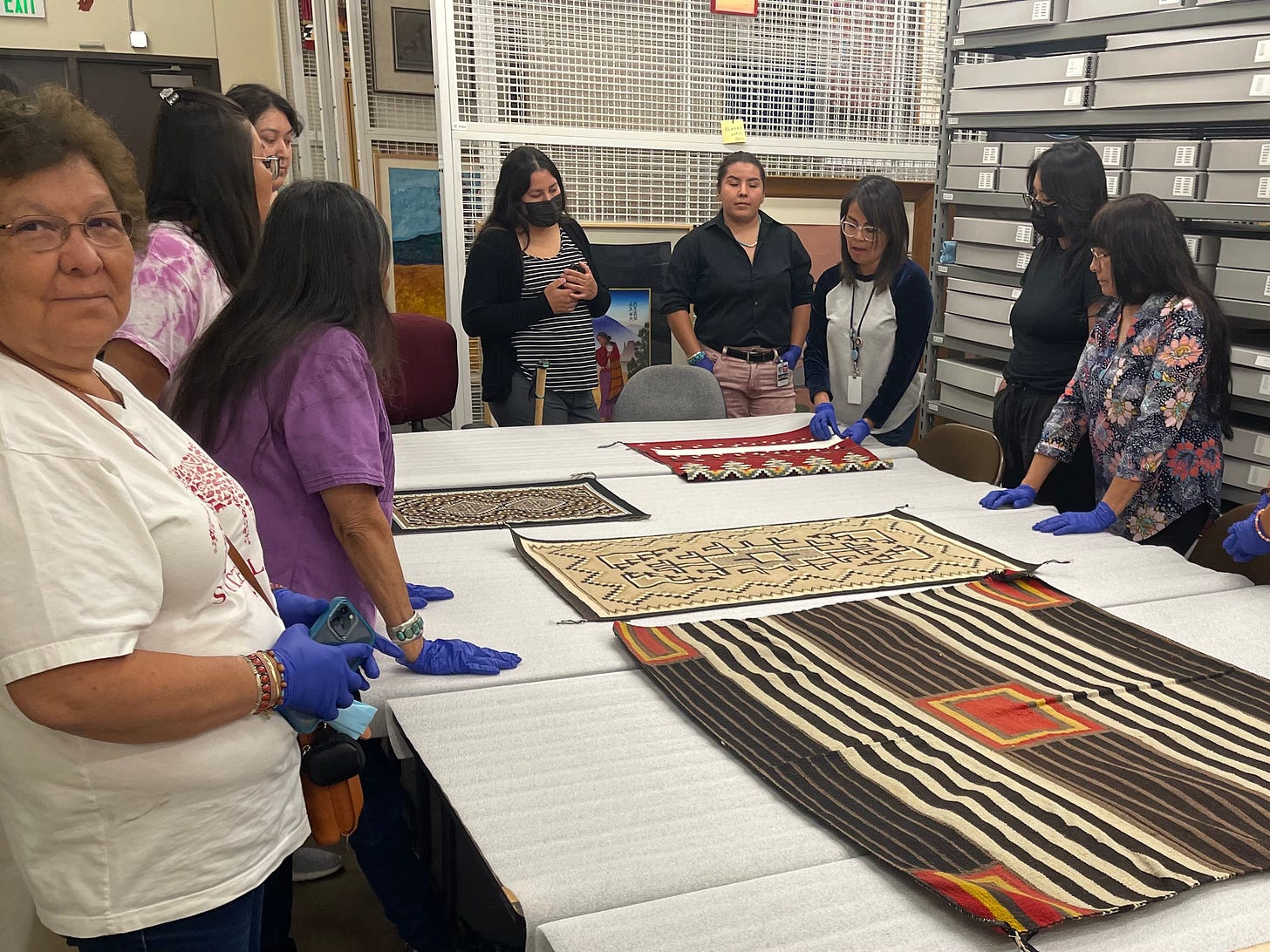
While the museum's impact on the representation of Native art is still a subject of debate, it is clear that the Heard Museum has taken significant steps to support Native artists and promote economic prosperity within their communities. The museum's Indian Fair & Market began in 1953. It has become an important platform for emerging and established artists to showcase their art and connect with collectors, curators, and other enthusiasts.
II. What to Expect at the Indian Fair & Market
Hundreds of artists apply to participate each year, but only about 600 are selected to showcase their work. The selection process is highly competitive, and a jury of experts is responsible for choosing the participating artists based on the quality and authenticity of their work.
Artists set up their booths outside in large tented areas. Each artist has their own booth, which they decorate with their artwork and any other materials they choose, such as photographs, signs, or banners. The booths are typically arranged in rows, and visitors can walk up and down the aisles to browse the art and speak with the artists. You'll have the opportunity to meet and talk with the artists, learn about their inspirations and processes, and purchase one-of-a-kind works directly from them.
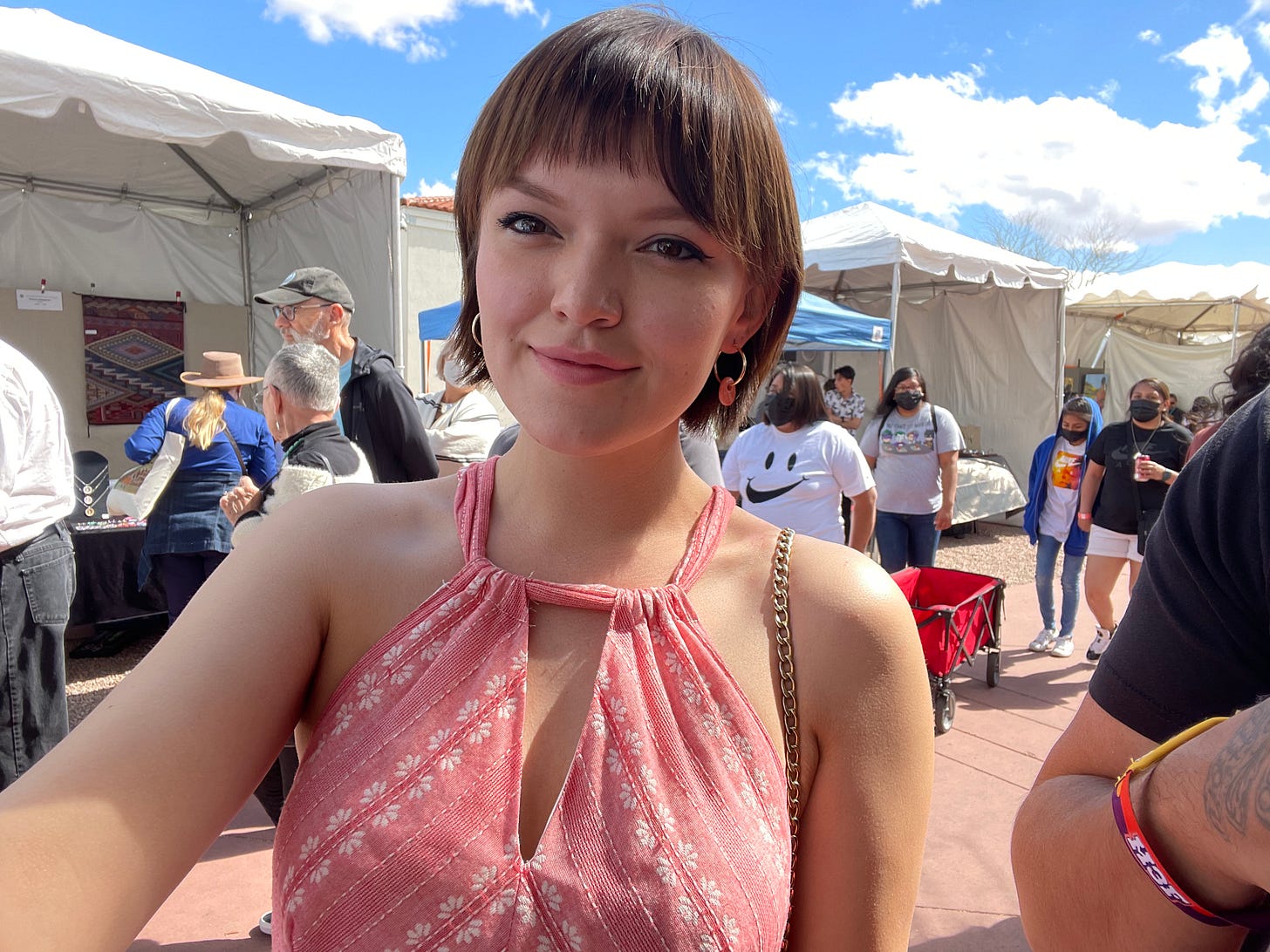
You can expect to see outstanding traditional works like Navajo rugs, Hopi kachinas, Zuni fetishes, and Pueblo pottery alongside a dynamic display of contemporary art created by Native artists. From fashion and photography to paintings and glasswork, the event showcases various mediums, techniques, and subject matter, revealing the innovative and boundary-pushing nature of contemporary Native art.
The Indian Fair & Market also includes an exciting award program that recognizes outstanding artwork in a variety of categories. The awards are highly coveted among Native artists and are an important part of the event. The awards are given to artists who demonstrate exceptional skill and creativity in their work. Categories include jewelry, pottery, textiles, paintings, sculpture, and more. The award winners receive ribbons of various colors, with the top award being the coveted blue ribbon.
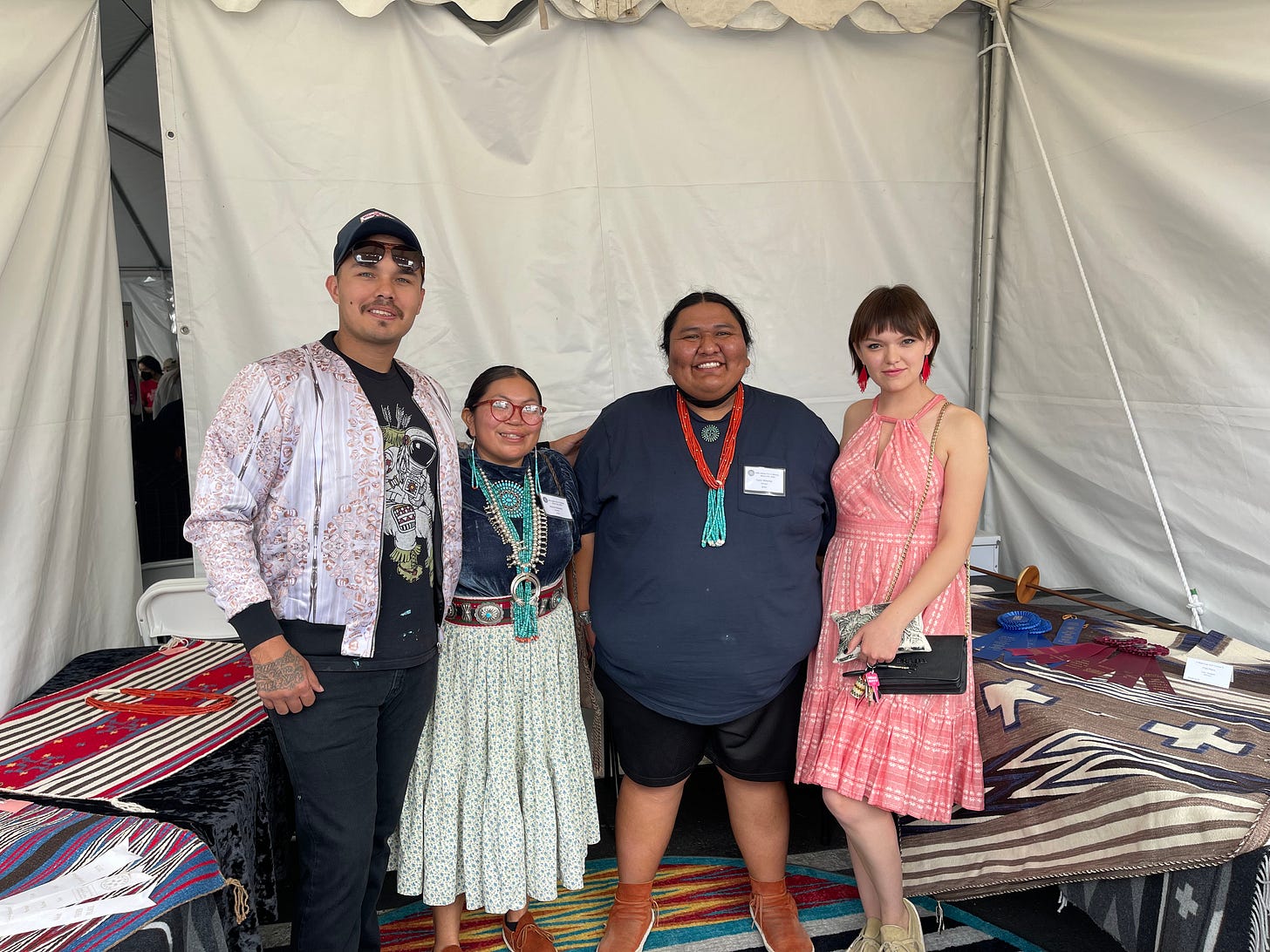
The award ceremony is certainly a highlight of the event. Visitors can see the award-winning pieces on display and meet the artists who created them. In addition to recognizing excellence in Native art, these awards also enhance the value and prestige of the artwork, making it even more desirable to collectors fortunate enough to acquire one.
III. Beyond the Art Market
While the art market is the main highlight, there are many other things to explore at the Heard during this festive weekend. In addition to the market itself, visitors can enjoy live music and dance performances, delicious food and drink, and hands-on activities for all ages. Included in the cost of entry is admission to the museum's exhibits.
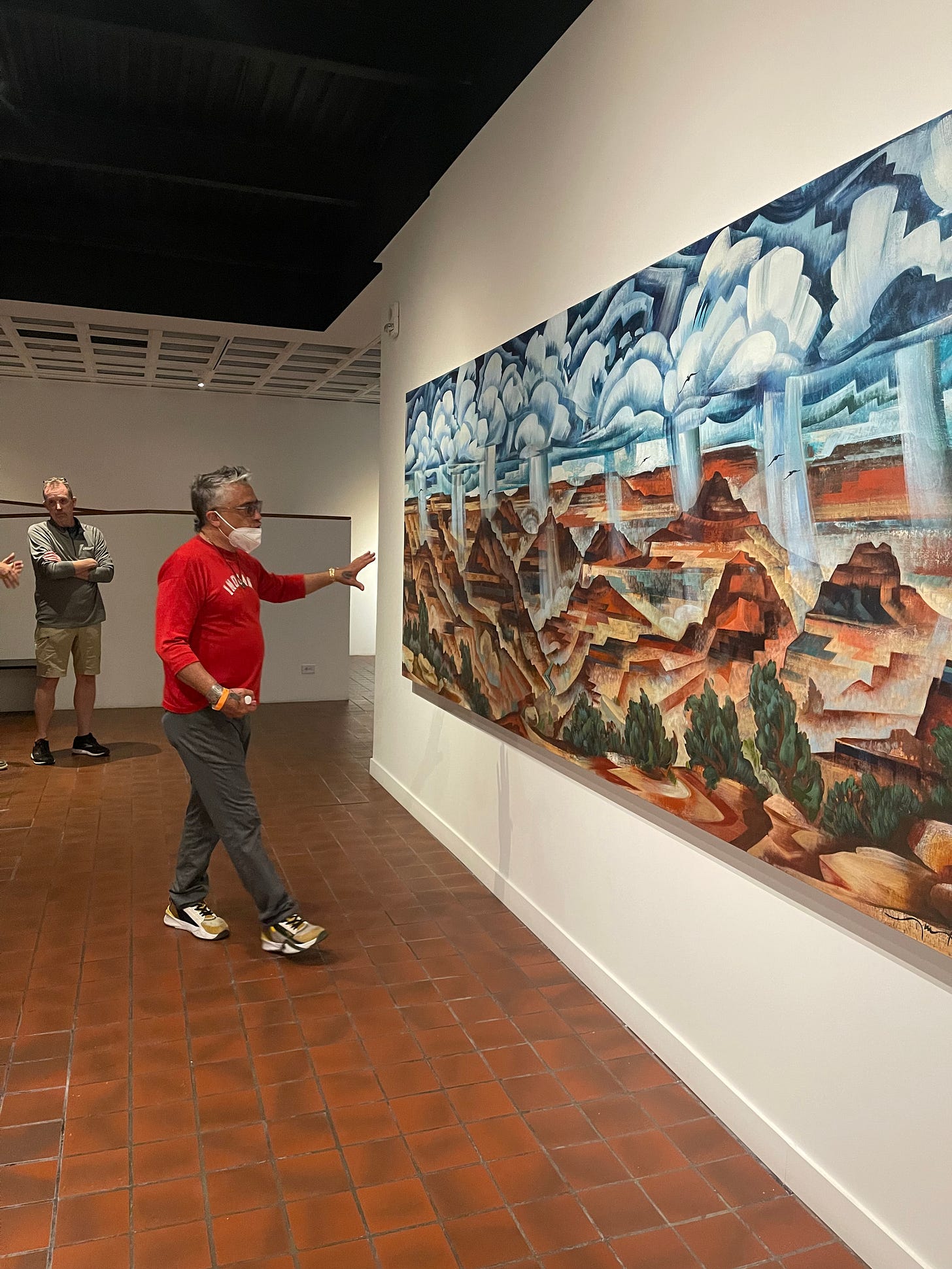
The museum's collection features more than 44,000 objects, and visitors can explore a wide range of exhibitions. For example, the permanent exhibition, "HOME: Native People in the Southwest," provides an overview of the region's rich cultural history, while the "He'e Nalu: The Art and Legacy of Hawaiian Surfing" exhibition explores the origins of surfing shared through a Kānaka Maoli (Native Hawaiian) perspective through the process of mo'olelo, the method of storytelling "how it came to be."
The Heard Museum Store is an extension of the Heard Museum's mission to promote Native art and culture. Located in the central courtyard, the store offers an impressive selection of unique and authentic Native American art, jewelry, pottery, textiles, and other handmade items. The store also carries a variety of books and music that provide additional insight into Native culture.
IV. The Significance of Native Art Markets
By providing a platform for Native artists to showcase their work, Native art markets help to promote and celebrate Native creativity. It also provides a space for intertribal exchange and fosters community and connection among Native artists. In addition to cultural significance, markets like this also play an important economic role for Native communities. Many Native artists rely on the income generated by art markets to support themselves and their families.
Native art markets are a more than just place to sell and buy art— they’re an opportunity for cultural exchange and learning. Visitors can engage with Native artists and learn about their art-making processes, the cultural significance of their work, and the challenges they face as Native artists.
Native artists have historically faced a range of challenges in the contemporary art market. Despite producing incredible works of art that reflect their cultural heritage and unique perspectives, many Native artists have struggled to find a foothold in the larger art world. They often face discrimination and marginalization due to their identity, and many galleries and museums overlook their work. This makes it difficult for Native artists to earn a living through their art and to gain recognition for their talent. While Native art is rapidly gaining interest in the broader art market, there is still a long wo go.
Events the Heard Museum's Indian Fair & Market provide a vital platform for Native artists to showcase their work and gain exposure to a broader audience. By participating in the market, artists have the opportunity to connect with collectors and buyers who are interested in their work, as well as to network with other artists and industry professionals. This exposure can help to raise awareness about the unique beauty and value of Native art and to challenge the stereotypes and misconceptions that persist about Native communities. In this way, events like the Indian Fair & Market not only provide economic support for Native artists but also contribute to the preservation and celebration of Native cultures and traditions.
V. How to Attend the Heard Market
The Indian Fair & Market takes place on the Heard Museum's campus on March 5-6, 2022, from 9:30 AM to 5:00 PM. The museum is located at 2301 North Central Avenue in Phoenix and has ample parking available.
To attend the fair and market, visitors must purchase tickets in advance online or at the museum's admission desk. General admission tickets cost $20 for adults, $10 for students and museum members, and $5 for children aged 6-17. Children aged five and under are admitted for free. The ticket price includes access to the museum's exhibits and the Indian Fair and Market.
To make the most of the experience, you should arrive early to beat the crowds and have plenty of time to explore the market's offerings. You should also come prepared to support the artists by purchasing their work, as this is a significant source of income for many of them. It's always a good idea to bring cash to the market, even with the convenience of easy payment systems like Square. If these systems malfunction due to the high volume of visitors using data, having cash on hand can ensure that you can purchase a piece of artwork you've had your eye on.
Additionally, you should dress comfortably and wear comfortable shoes, as there will be a lot of walking involved!
VI. Conclusion
In conclusion, whether you're a seasoned collector or simply curious about Native art, the Indian Fair & Market offers a unique opportunity to engage with this rich and diverse artistic tradition. By attending the market, you can support native artists and their communities while also enjoying an array of stunning traditional and contemporary artworks. From jewelry and pottery to paintings and textiles, there is something for everyone at the market. We encourage readers to visit the Heard Market and other Native American art markets across the country such as:
Santa Fe Indian Market - August - Santa Fe, New Mexico
Cherokee Art Market - October - Catoosa, Oklahoma
Eiteljorg Indian Market and Festival - June - Indianapolis, Indiana
Autry's American Indian Arts Marketplace - November - Los Angeles, California
SWAIA Winter Indian Market - December - Santa Fe, New Mexico
Muscogee Art Market - April - Tulsa, Oklahoma
Gathering of Nations Powwow and Indian Art Market - April - Albuquerque, New Mexico
These events provide a vital platform for artists to showcase their work and gain recognition for their talent. If you are unable to attend the Heard Market, keep an eye out for our future blog posts covering the other upcoming events mentioned above.

